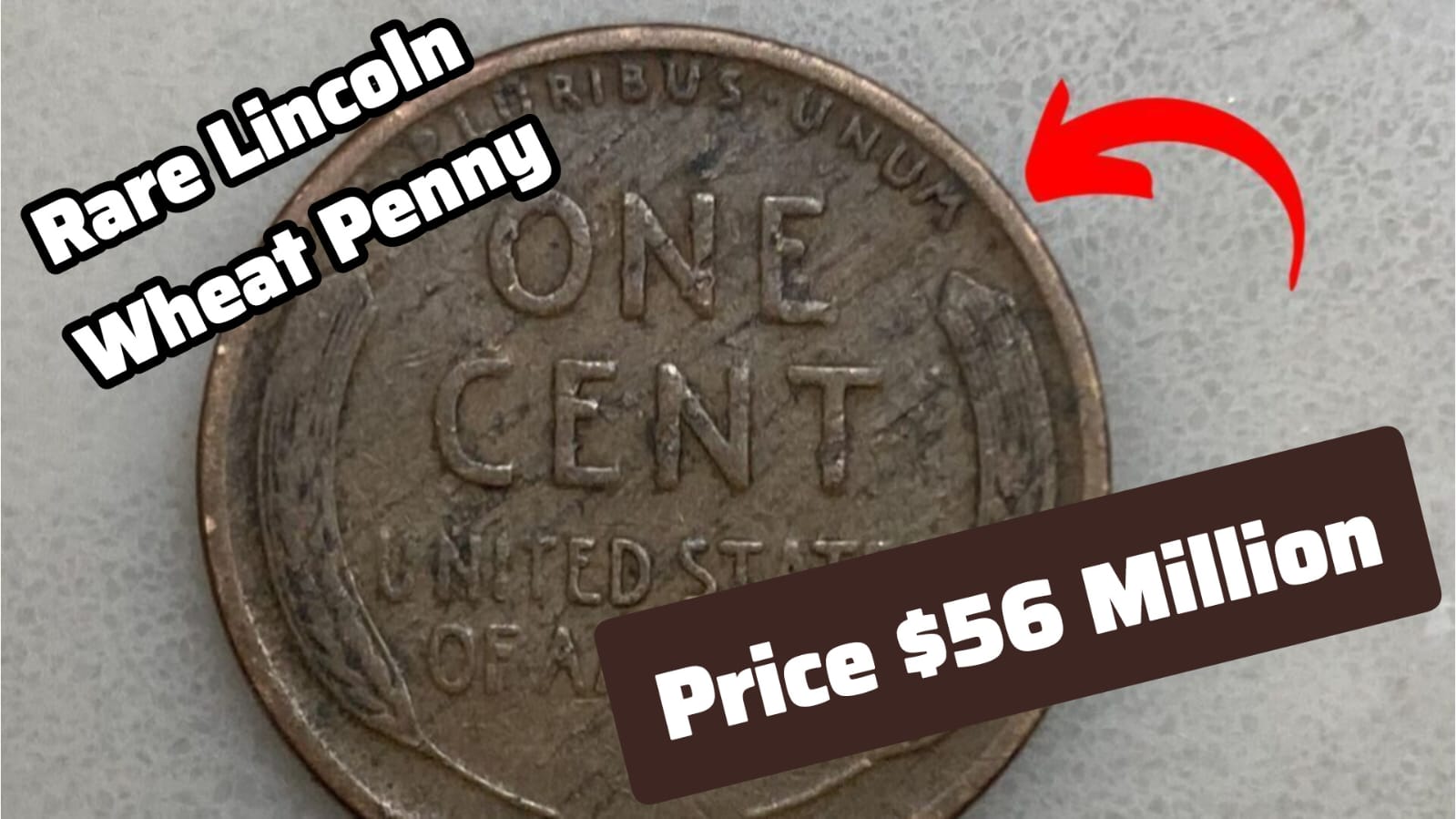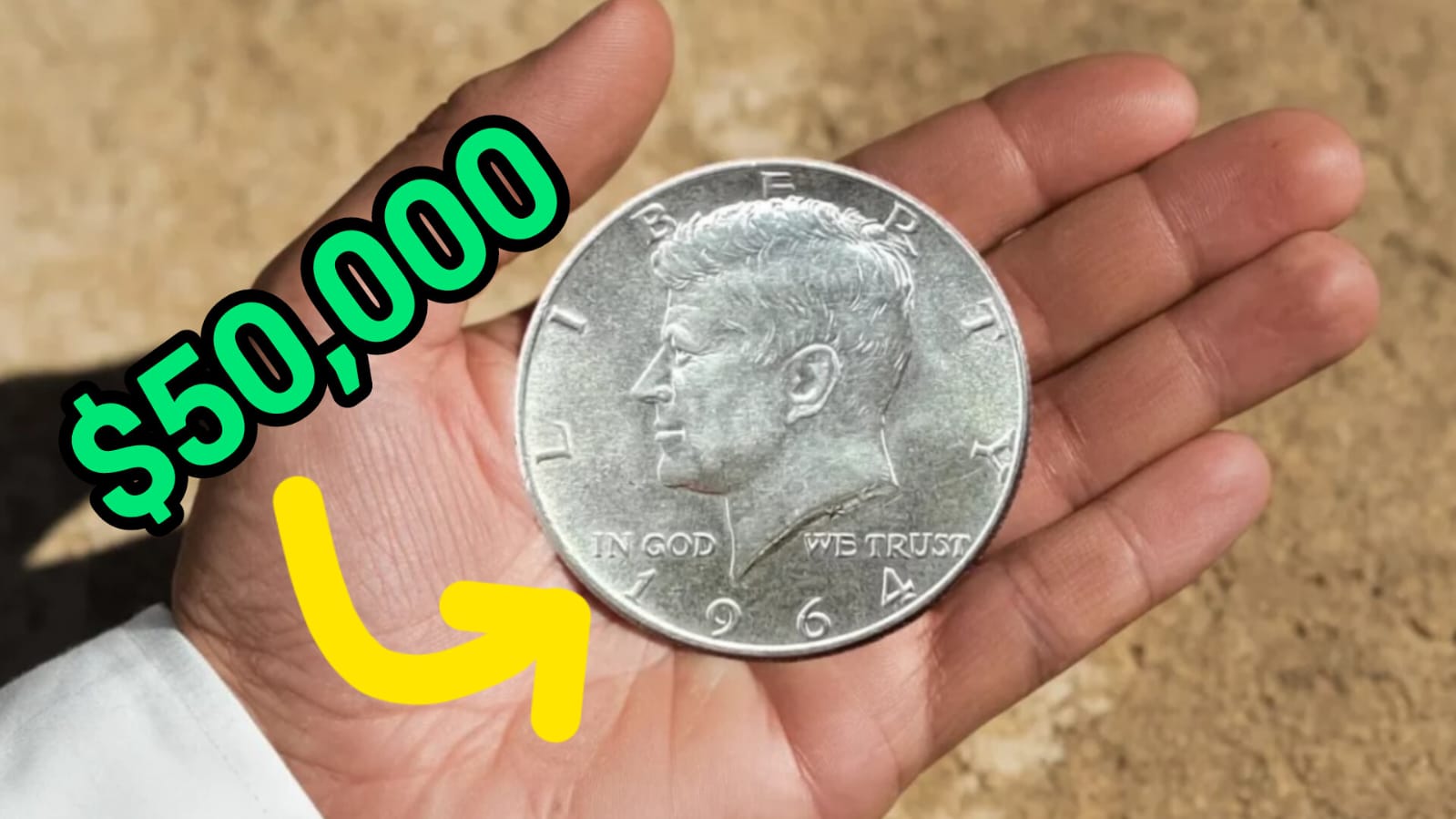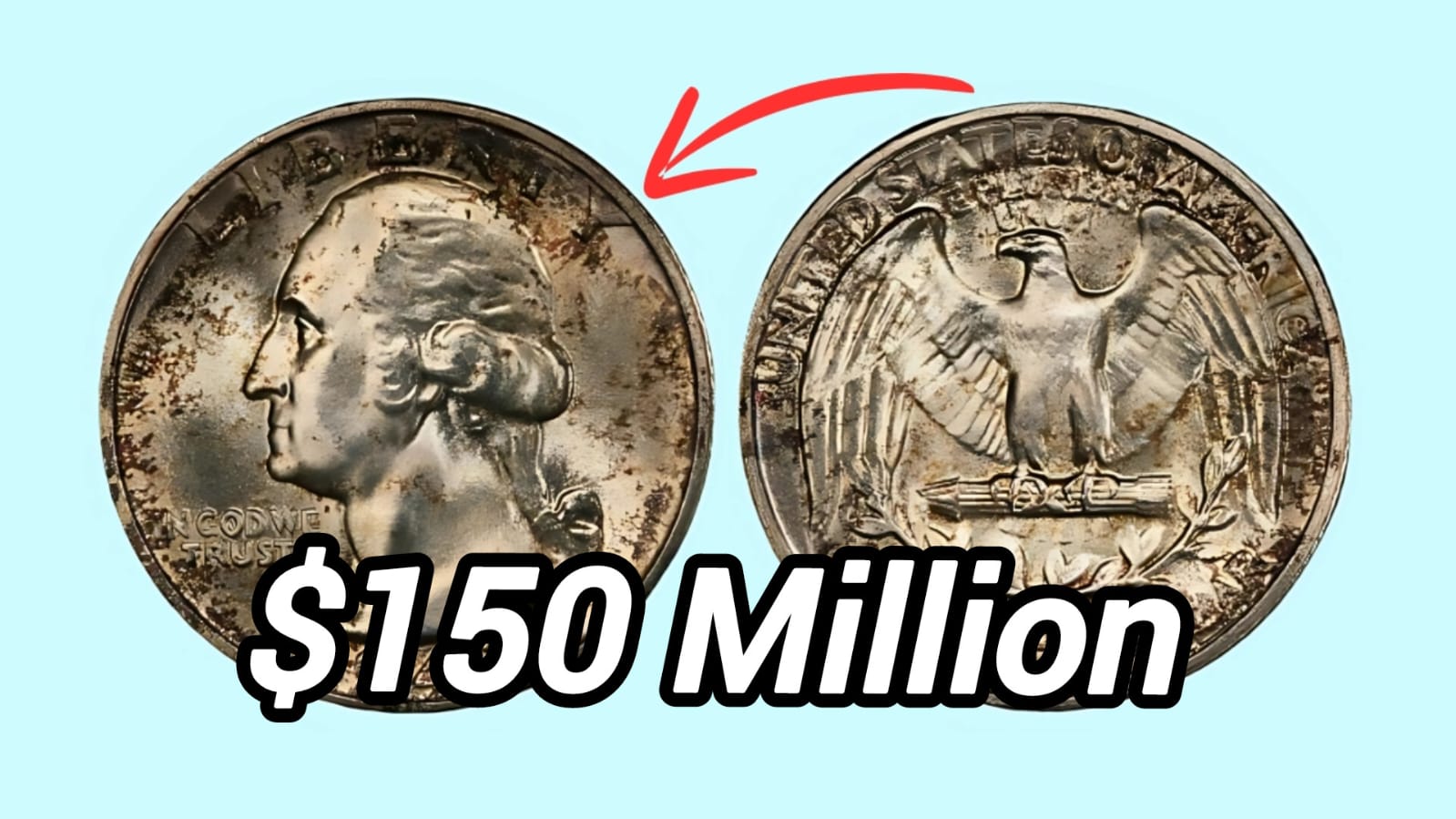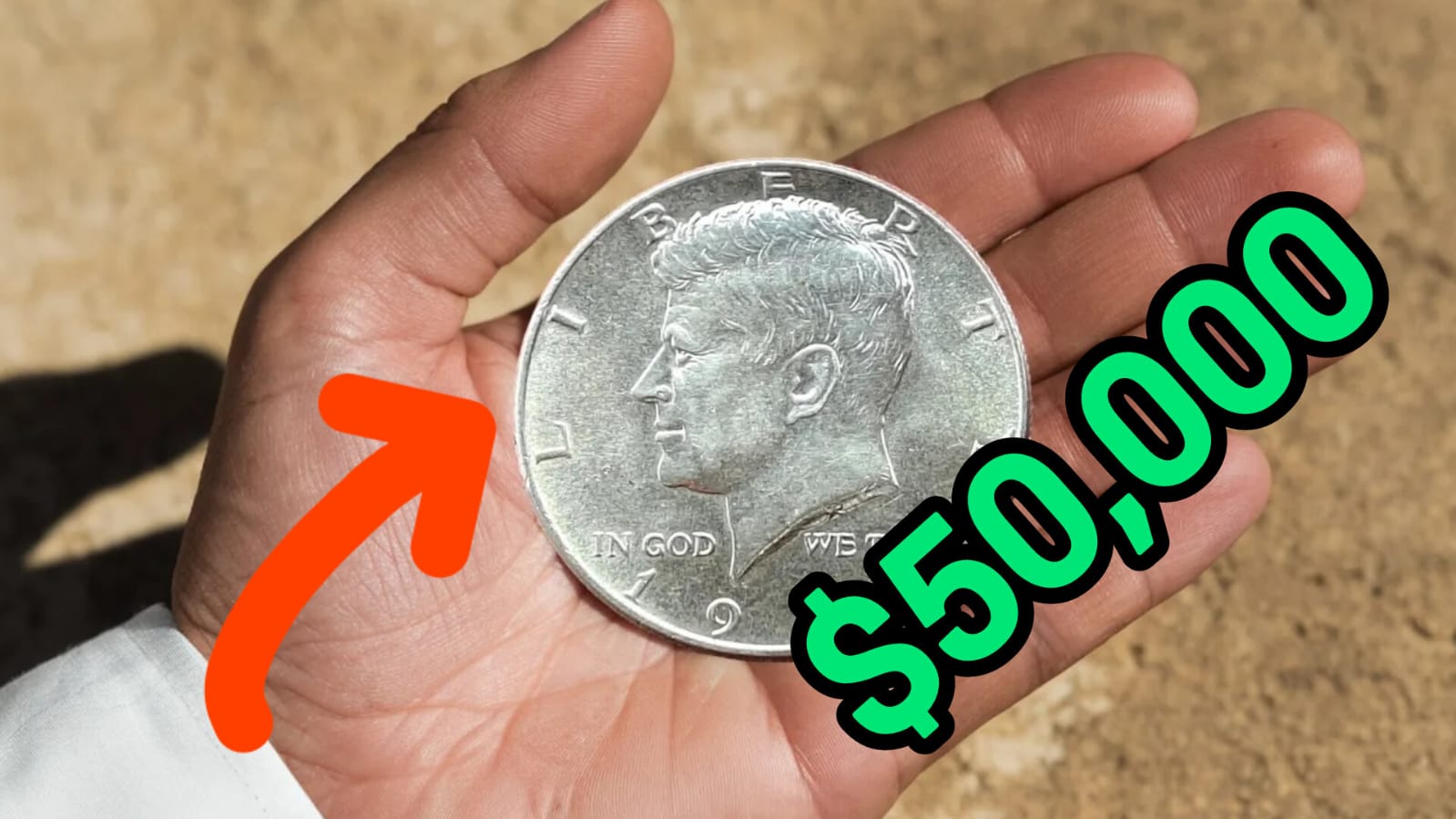Lincoln Wheat Penny: Have you ever glanced at the pennies jingling in your pocket and wondered if any of them might be worth more than just one cent? While most of us toss our loose change without a second thought, some Lincoln Wheat Pennies could potentially be worth thousands or even millions of dollars to collectors.
The internet is buzzing with claims about wheat pennies worth astronomical sums like $56 million, but what’s the real story behind these valuable coins? And more importantly, could you actually have one hiding in your spare change jar?
In this article, I’ll separate fact from fiction about the most valuable Lincoln Wheat Pennies still potentially in circulation. While the $56 million figure is certainly an exaggeration (and likely clickbait), there are genuinely rare wheat pennies worth substantial sums that occasionally turn up in everyday transactions, estate sales, and forgotten collections.
Let’s dive into the fascinating world of these copper treasures and discover what makes certain pennies so incredibly valuable.
The Truth About Lincoln Wheat Penny Values
First, let’s address the elephant in the room: despite what viral headlines might claim, there is no single Lincoln Wheat Penny worth $56 million.
The most valuable wheat penny ever sold at auction was a 1943-D bronze penny that fetched approximately $840,000 in 2021, with some private sales reportedly reaching up to $1.7 million. While these are certainly life-changing sums, they’re a far cry from $56 million.
The Lincoln Wheat Penny, produced from 1909 to 1958, features Abraham Lincoln’s profile on the obverse (front) and two wheat stalks on the reverse, giving the coin its popular nickname.
While billions were minted over nearly five decades, certain years, mint marks, and errors have created varieties that are extremely scarce and highly prized by collectors.
These exaggerated valuations often appear in clickbait videos and articles with titles like “You Won’t Believe These 8 Wheat Pennies Are Worth Millions” or “Retire Instantly If You Find These Rare Pennies Worth Millions!” While these headlines grab attention, they typically overstate the actual values of even the rarest specimens.
The Most Valuable Lincoln Wheat Pennies
Let’s explore the genuinely valuable Lincoln Wheat Pennies that could still potentially be found in circulation:
1. 1943 Copper Penny
Estimated Value: $100,000 – $1,750,000
During World War II, copper was needed for the war effort, so the U.S. Mint switched to zinc-coated steel for pennies in 1943. However, a few copper planchets (coin blanks) from 1942 accidentally made their way into the production line, resulting in the extremely rare 1943 copper penny.
Only about 20-30 of these pennies are known to exist across all three mints (Philadelphia, Denver, and San Francisco), making them among the rarest and most valuable U.S. coins. The 1943-D (Denver) copper penny is the rarest, with just a handful known to exist.
To identify a genuine 1943 copper penny:
- It should have the date 1943
- It should NOT stick to a magnet (unlike the steel pennies)
- It should weigh approximately 3.11 grams
- It should have a distinctive copper color rather than the silvery appearance of the steel cents
2. 1944 Steel Penny
Estimated Value: $85,000 – $125,000
In 1944, the Mint switched back to using copper for pennies. However, in a reverse of the previous year’s error, a few steel planchets from 1943 were accidentally used, creating the rare 1944 steel penny.
With fewer than 30 known examples, finding a 1944 steel cent could bring a windfall of $85,000 to $125,000, depending on condition and mint mark. Unlike the copper 1944 pennies, these will stick to a magnet and have a silvery appearance.
3. 1955 Doubled Die Obverse Penny
Estimated Value: $1,000 – $114,000
This famous error occurred when the die used to strike the coins was improperly made, causing a noticeable doubling effect on the obverse (front) side. The doubling is most visible in the date, the word “LIBERTY,” and the motto “IN GOD WE TRUST.”
Approximately 20,000-24,000 of these error coins entered circulation before the mistake was discovered, making them rare but not impossible to find. Even in worn condition, these pennies can fetch $1,000 or more, while pristine examples have sold for over $114,000.
4. 1909-S VDB Penny
Estimated Value: $700 – $117,500
The 1909-S VDB penny is one of the most famous and sought-after coins in American numismatics. The “VDB” refers to the initials of the coin’s designer, Victor David Brenner, which appear on the reverse. The “S” indicates it was minted in San Francisco.
Only 484,000 were produced before public controversy over the prominence of the designer’s initials led to their removal, creating an instant rarity. Even in worn condition, these pennies command prices of $700 or more, while pristine examples can sell for well over $100,000.
| Rank | Penny | Key Features | Estimated Value Range |
|---|---|---|---|
| 1 | 1943 Copper | Copper instead of steel, doesn’t stick to magnet | $100,000 – $1,750,000 |
| 2 | 1944 Steel | Steel instead of copper, sticks to magnet | $85,000 – $125,000 |
| 3 | 1955 Doubled Die | Visible doubling on date and lettering | $1,000 – $114,000 |
| 4 | 1909-S VDB | Designer’s initials on reverse, San Francisco mint | $700 – $117,500 |
| 5 | 1914-D | Low mintage, Denver mint | $200 – $158,625 |
How to Identify Valuable Lincoln Wheat Pennies
Now that you know which pennies to look for, here are some tips to help you identify potentially valuable specimens:
Check the Date and Mint Mark
The date appears on the obverse (front) of the coin, while the mint mark (if present) can be found on the obverse below the date. Coins from Philadelphia often have no mint mark, while those from Denver have a “D” and those from San Francisco have an “S.”
Key dates to look for include 1909-S, 1914-D, 1922 (no D), 1931-S, and of course, 1943 (copper) and 1944 (steel).
Examine for Errors and Varieties
Use a magnifying glass to look for doubling, off-center strikes, or other unusual features. The 1955 Doubled Die is the most famous, but there are many other valuable error coins in the wheat penny series.
Some errors to look for include:
- Doubled dies (where design elements appear doubled)
- Off-center strikes
- Repunched mint marks
- Missing mint marks (like the 1922 No D)
Test with a Magnet
This is particularly important for 1943 and 1944 pennies. A 1943 penny that doesn’t stick to a magnet might be the valuable copper variety, while a 1944 penny that does stick could be the rare steel version.
Assess the Condition
Coin condition dramatically affects value. Numismatists use a 70-point scale, with higher numbers indicating better preservation. Even common wheat pennies in pristine condition can be worth more than their face value.
Beware of Exaggerated Claims and Scams
With the popularity of rare coins comes the inevitable rise of scams and misinformation. Be wary of online listings or videos claiming pennies worth “billions” or even “$56 million” as these are clearly exaggerations designed to generate clicks.
Some common scams include:
- Copper-plated 1943 steel pennies (to make them look like the rare copper version)
- Altered dates (changing a 1948 to look like a 1943)
- Fake mint marks added to common coins
- Artificially toned or “enhanced” coins
When in doubt, consult with a reputable coin dealer or consider professional authentication for potentially valuable finds.
Conclusion
While the claim of Lincoln Wheat Pennies worth $56 million is certainly an exaggeration, the reality is still fascinating and potentially lucrative. The most valuable wheat pennies discussed in this article have sold for hundreds of thousands to over a million dollars in top condition.
Even in more modest grades, finding any of these rarities could mean a windfall of hundreds or thousands of dollars.
The beauty of coin collecting is that these treasures could be hiding anywhere – in your pocket change, a grandparent’s old collection, or a roll of pennies from the bank.
By familiarizing yourself with the key dates, mint marks, and errors to look for, you increase your chances of making that lucky find.
So the next time you receive change or come across old pennies, take a moment to examine them closely. You never know – that humble one-cent piece might just be worth a small fortune!
FAQs About Valuable Lincoln Wheat Pennies
1. How can I tell if my 1943 penny is the valuable copper version? A genuine 1943 copper penny will not stick to a magnet (unlike the common steel version), will weigh approximately 3.11 grams, and will have a distinctive copper color. Be cautious of counterfeits, as some people copper-plate steel pennies or alter the dates on 1948 pennies to try to pass them off as the rare 1943 copper variety.
2. Are all wheat pennies valuable? No, most wheat pennies are worth only a few cents above face value. However, certain dates, mint marks, and error varieties can be worth substantially more. Even common wheat pennies in uncirculated condition can command a premium over face value.
3. Should I clean my old pennies to make them look better? Absolutely not! Cleaning coins can significantly reduce their value to collectors, who prefer original surfaces even if they show some toning or wear. If you believe you have a valuable coin, consult with a professional numismatist before doing anything that might damage it.
4. Where can I get my rare penny authenticated? Professional coin grading services like PCGS (Professional Coin Grading Service) or NGC (Numismatic Guaranty Corporation) can authenticate and grade your coin for a fee. For potentially valuable specimens like the 1943 copper penny, professional authentication is essential.
5. Is it legal to own error coins like the 1943 copper penny? Yes, it’s completely legal to own error coins, including the 1943 copper penny. While some experimental patterns and trial pieces may be claimed by the government, error coins that were legitimately released into circulation are legal to own and trade.
OAS Increase in 2025: Canadian Seniors Can Get $2350 – Check Eligibility Criteria!



